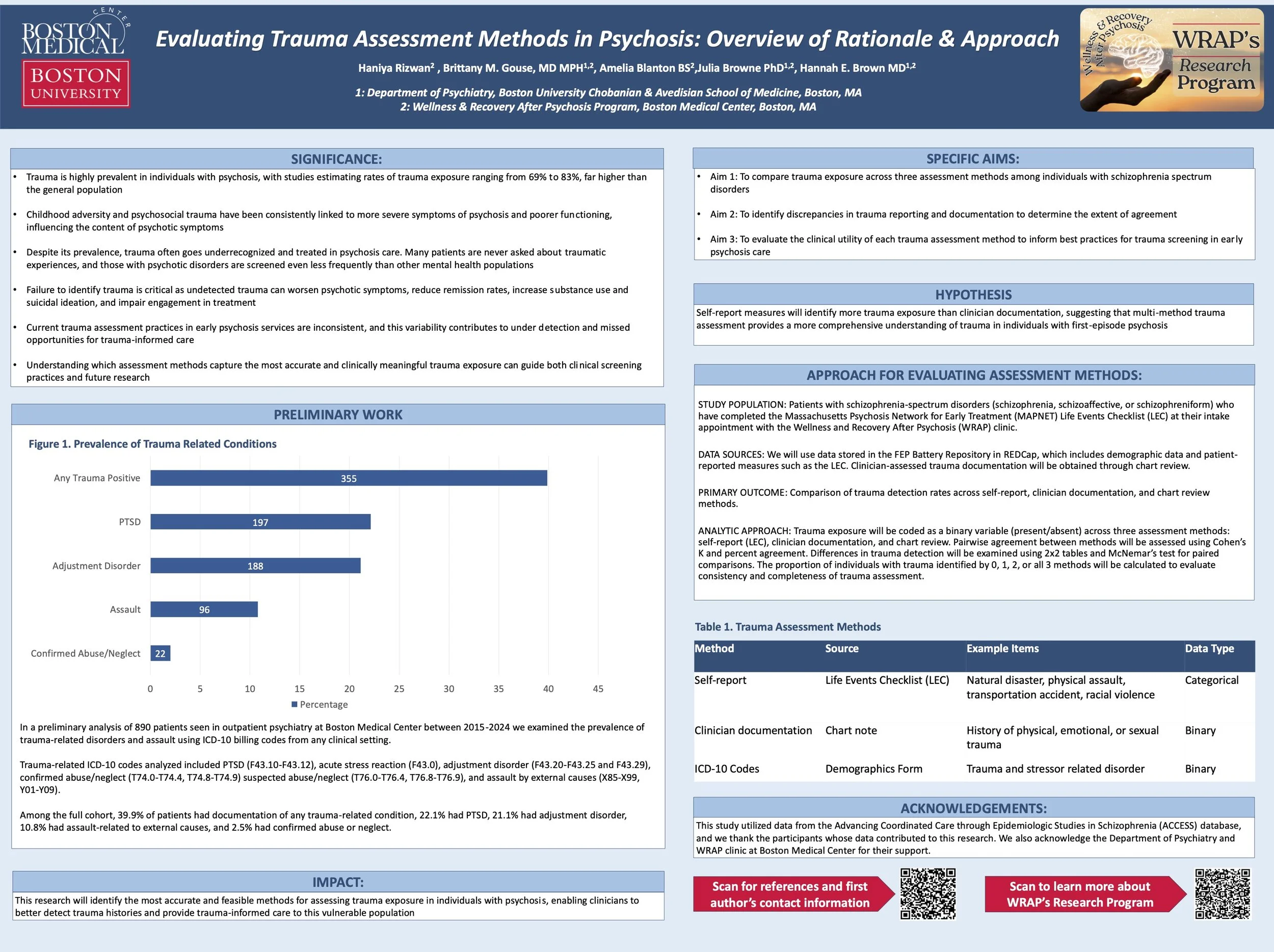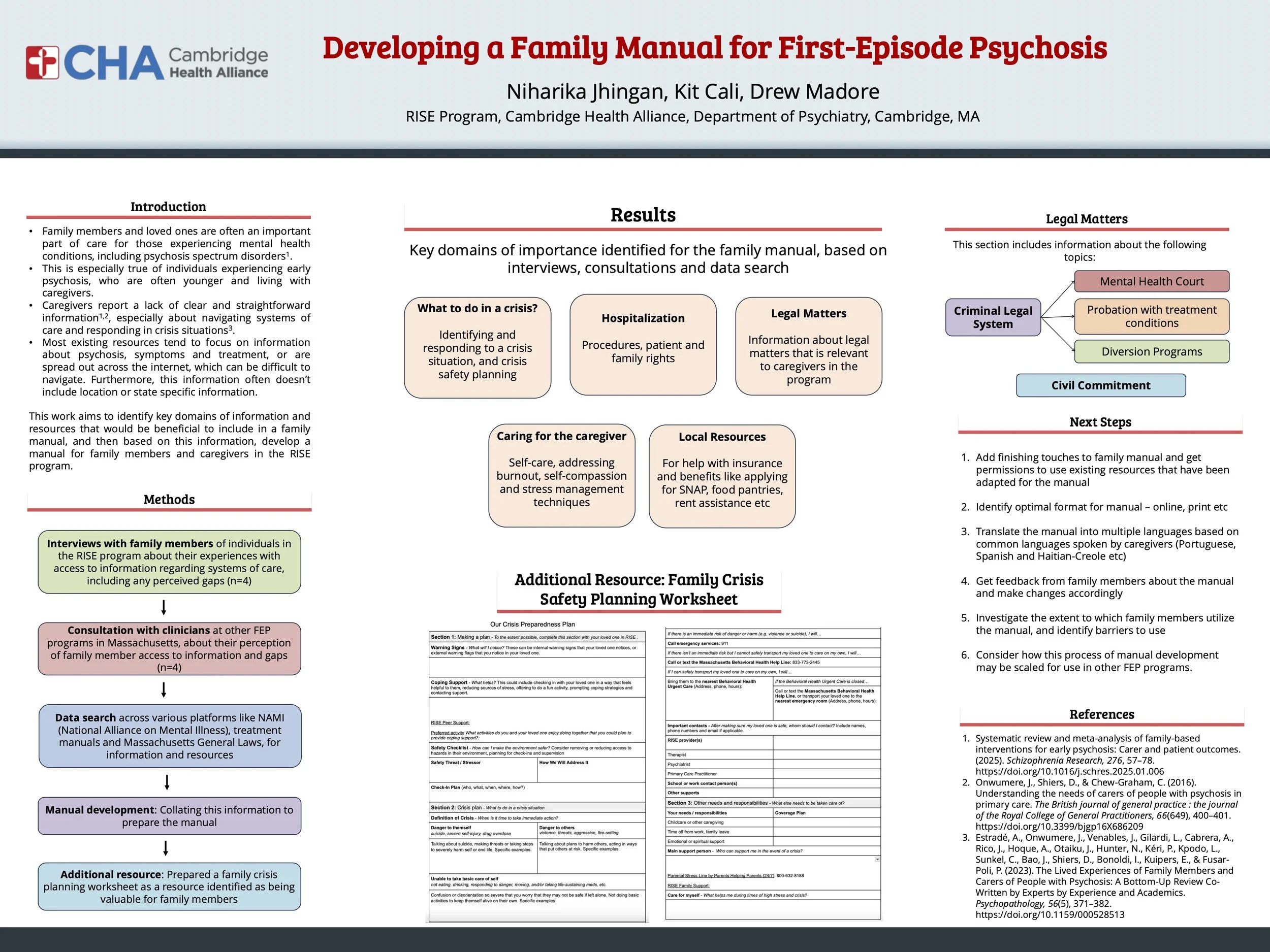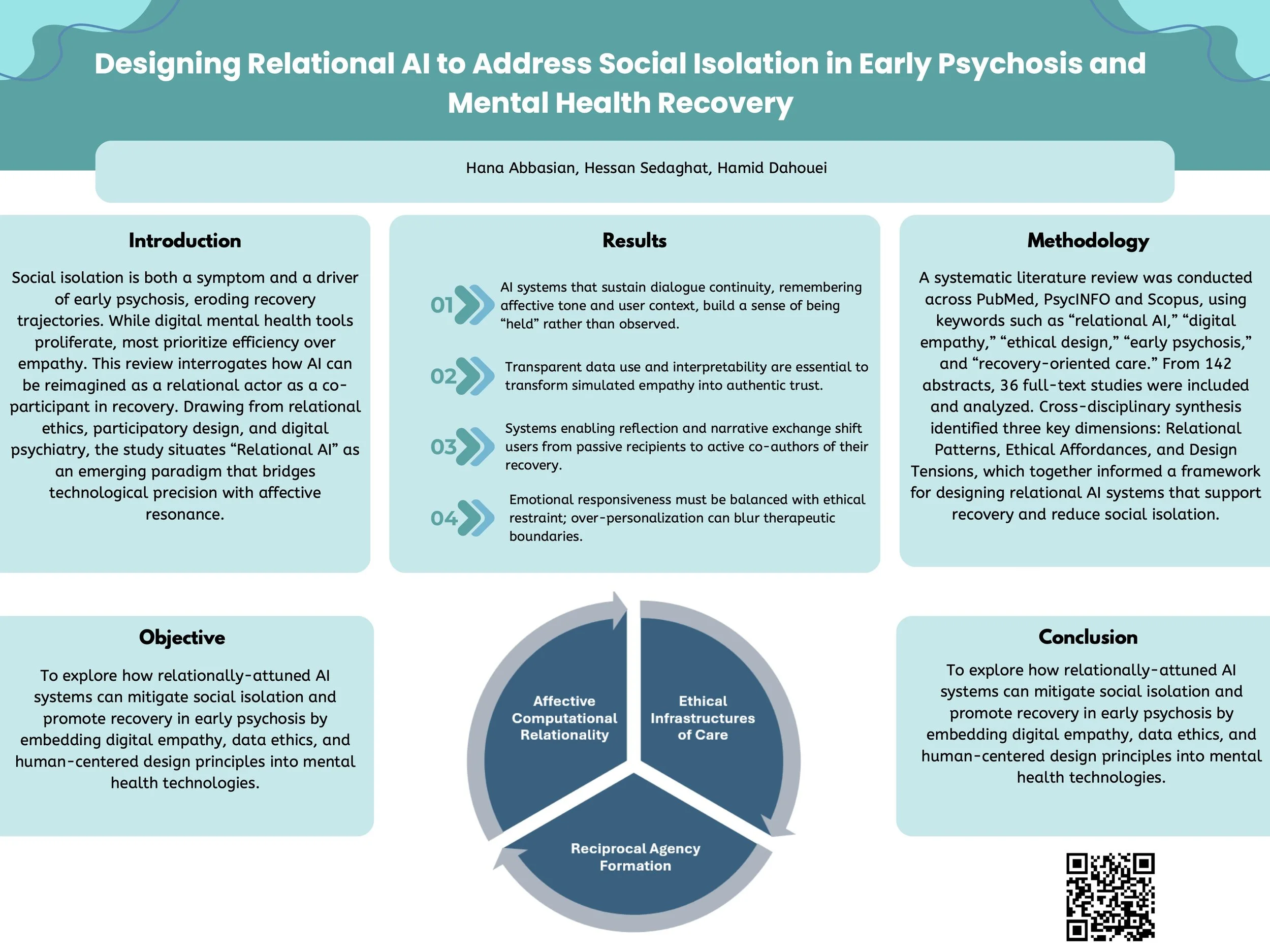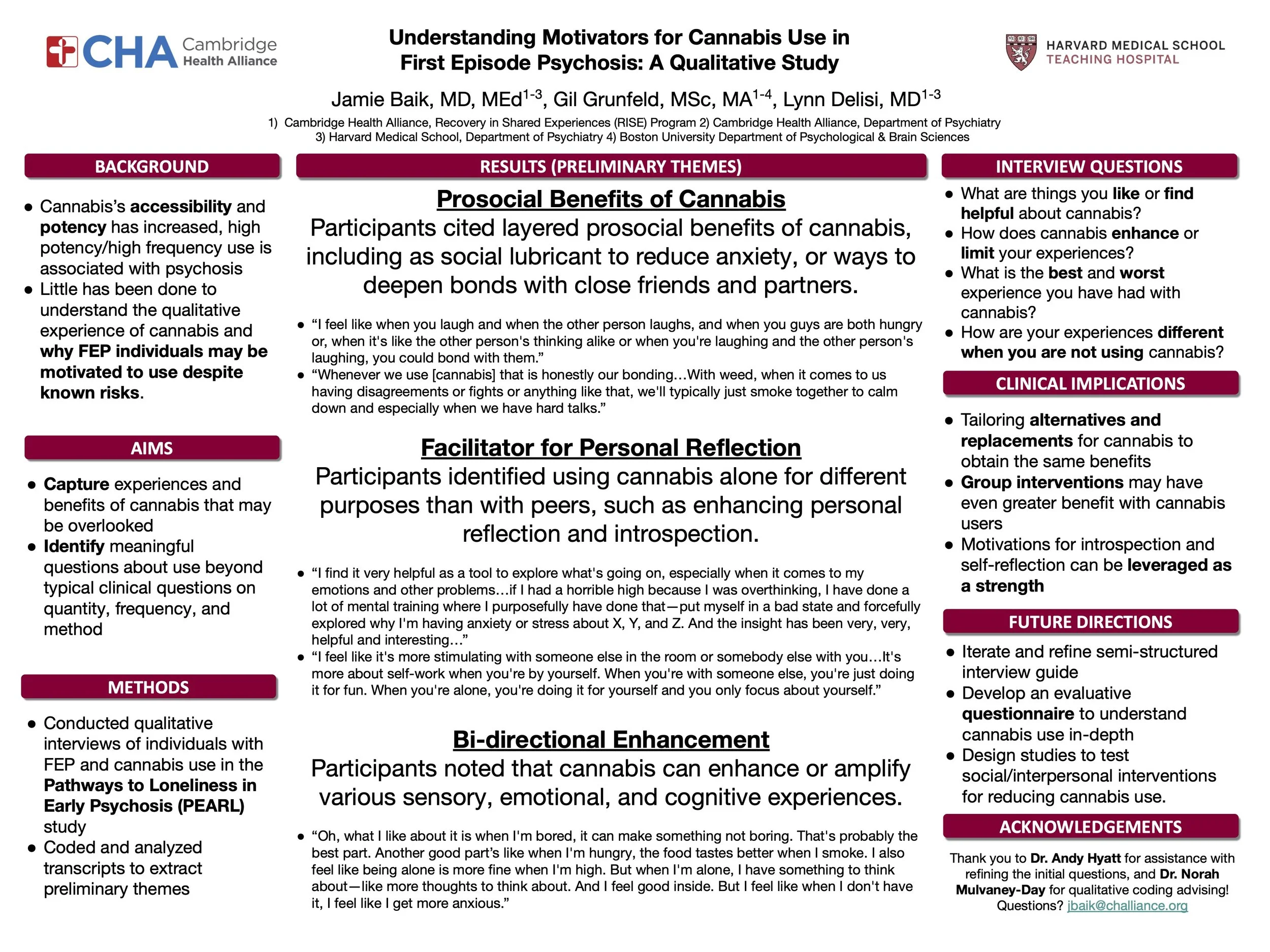Building a Systems-Wide Coalition to Improve Long-Acting Injectable Antipsychotic Use in Massachusetts
Building a Systems-Wide Coalition to Improve Long-Acting Injectable Antipsychotic Use in Massachusetts
1. Cheryl Yunn Shee Foo (Center of Excellence for Psychosocial and Systemic Research, Department of Psychiatry, Massachusetts General Hospital ; Department of Psychiatry, Harvard Medical School)
2. Corinne Cather, PhD (Massachusetts General Hospital; Harvard Medical School)
3. Sarah MacLaurin, PMHNP-BC (North Suffolk Community Services; Massachusetts General Hospital)
4. Michael Angelini, PharmD, BCPP (Massachusetts College of Pharmacy and Health Sciences)
5. David Hoffman, MD (Massachusetts Department of Mental Health)
6. Margaret Guyer, PhD (Massachusetts Department of Mental Health; Harvard Medical School)
7. Amam Saleh, MD (Massachusetts Department of Mental Health)
8. Massachusetts General Hospital LAI Working Group: Abigail Donovan, MD; Alex Keuroghlian, MD; Amir Hassan, MD; Carol Lim, MD, MPH; Collin O’Neill, RPh, MBA, BCNP (Massachusetts General Hospital); Eden Evins, MD, MPH; Kim Mueser, PhD (Boston University); Oliver Freudenreich, MD, Samuel Kohrman, MD (all affiliated with Massachusetts General Hospital; Harvard Medical School, except CO and KM)
Background: Long-acting injectable antipsychotics (LAIs) remain underutilized despite evidence demonstrating reduced relapse, hospitalizations, and mortality in psychotic disorders, including in early-phase illness. In Massachusetts, only 7% of Medicaid beneficiaries and 11% of early psychosis patients use LAIs. Persistent multi-level barriers to LAI use require innovative systems-wide solutions.
Methods: In 2025, the Massachusetts Department of Mental Health and the Massachusetts General Hospital Center of Excellence convened a cross-sector coalition to collaboratively improve community care settings’ capability to provide LAIs. Monthly Steering Committee meetings provided strategic guidance to iteratively identify partnerships and define goals. Group/statewide meetings with leaders and providers across community behavioral health centers (CBHCs), first-episode psychosis (FEP) programs, inpatient services, and pharmacy administrators scoped LAI administration pathways and major barriers, and generated buy-in. A Working Group of research and practice experts proposed evidence-informed tools and an implementation plan to begin addressing barriers.
Results: The Coalition united state agency leaders, clinical leadership and frontline providers from diverse behavioral health settings, advocates, and interdisciplinary clinical and research experts. Most providers understood the advantages of LAIs, but were constrained in prescribing them by three major barriers: 1) patient reluctance; 2) knowledge gaps about LAI administration services or locations; 3) limited clinical sites capable of LAI administration. We are developing tools to address patient and provider barriers, including: 1) a statewide LAI administration site directory through the Massachusetts Behavioral Health Help Line; 2) an evidence-informed LAI Treatment Decisions Provider Pocket Card; and 3) a LAI decision aid tool to facilitate shared decision making. To better understand and prioritize site-specific barriers to LAI administration, we will conduct a landscape analysis of resource and training needs in CBHCs and FEP programs. Through a collaborative process of selecting and tailoring feasible solutions, including the potential implementation of developed tools, we aim to create a roadmap for expanding LAI access and use in the community.
Conclusions: Community-engaged coalition-building facilitates cross-learning, resource-sharing, and coordinated action across diverse settings to improve systems-wide LAI use. Ongoing work will deploy and evaluate these strategies with service user feedback and implementation science methods, and extend approach to other underutilized treatments such as clozapine.






























